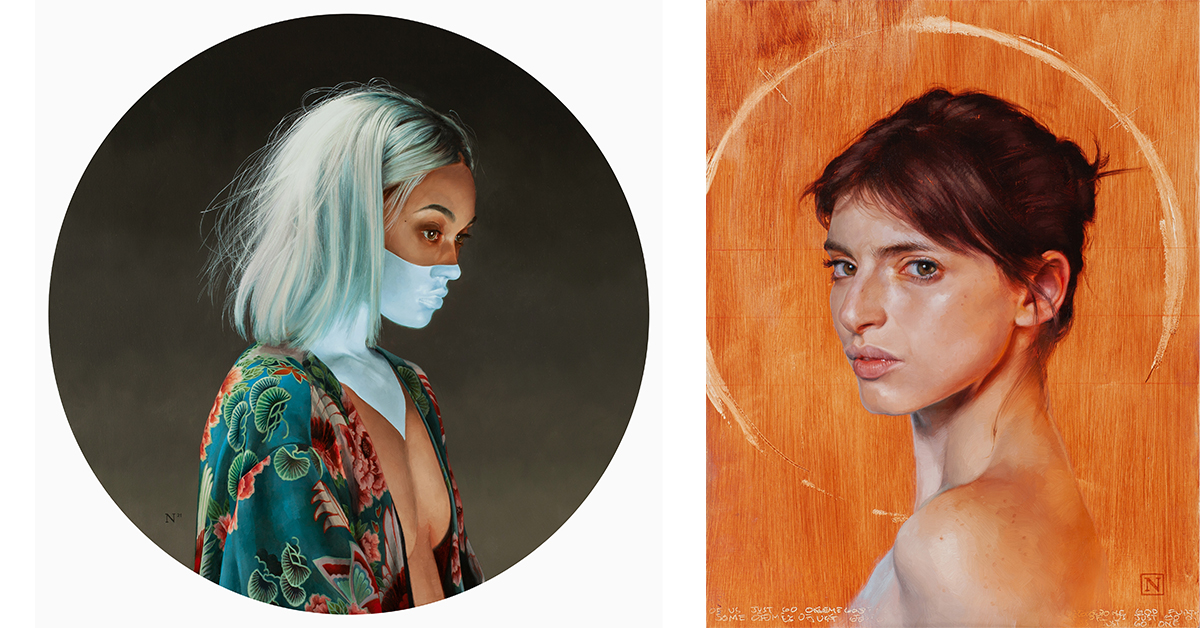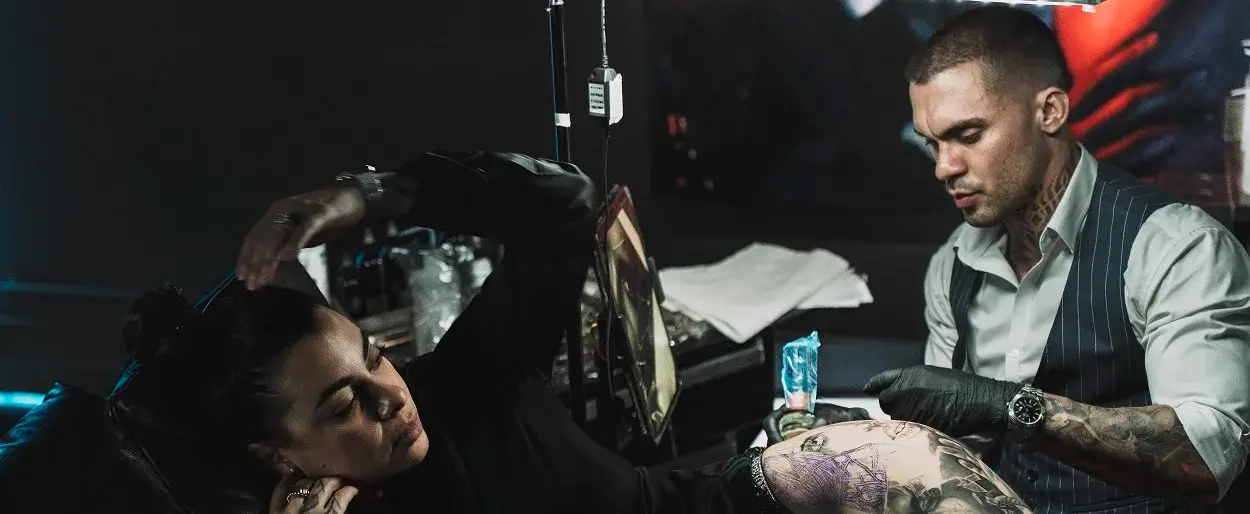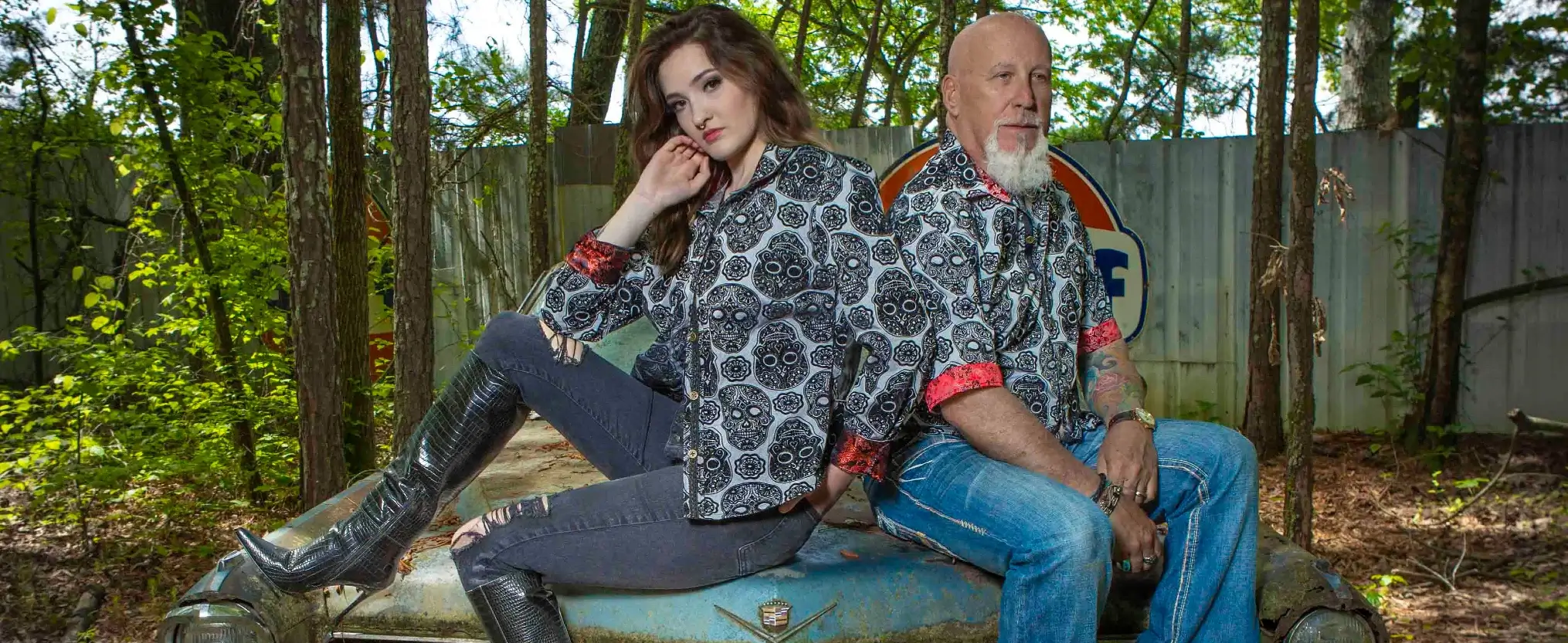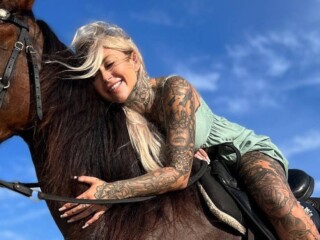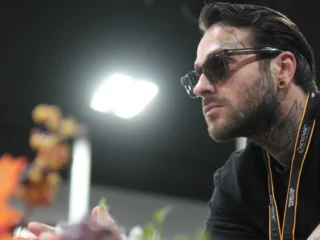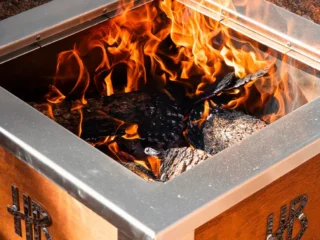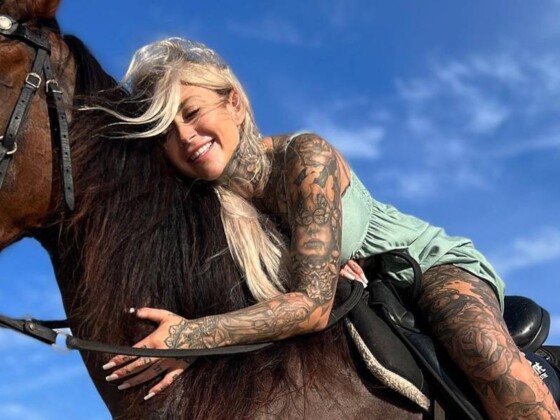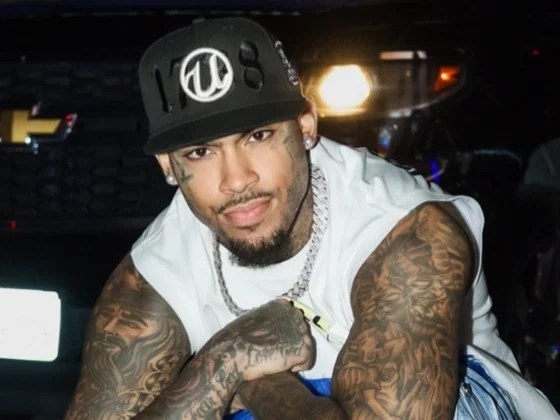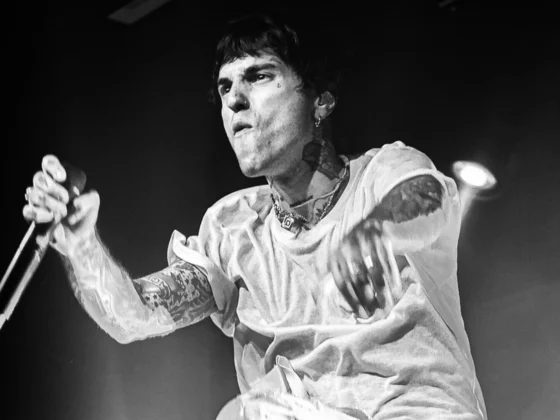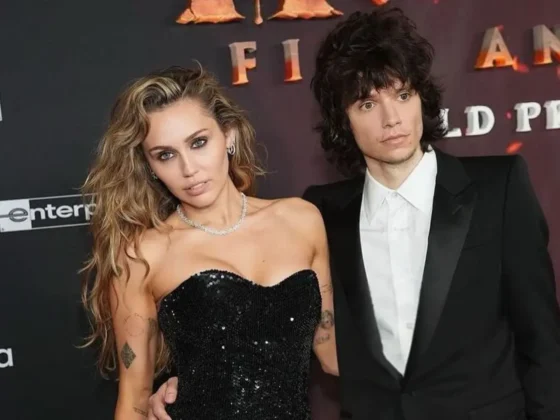Inked Mag Staff
May 11th, 2022
Photographs in Oil
Aaron Nagel creates gorgeous oil paintings that leave you wondering how he achieves such fine detail
In a world where everybody is in a perpetual rush, Aaron Nagel likes to slow things down. He resonated with oil paints the first time he used them and now creates incredibly realistic paintings that demand hours of careful attention before they come to life. We spoke with Nagel about his inspirations, what drew him to portraiture and what NFTs will do to the art world.
What sort of role did art play in your childhood? My dad is a jazz musician, so my sister and I were around music all the time. We both started playing piano at 6 and I started trumpet in the fourth grade. Music and art [as a whole] were always very much encouraged.
Do you remember the first time you fell in love with painting? Not painting in general, but I remember very clearly the first time I fell in love with oil painting. I had painted with acrylics quite a bit as a kid, nothing remotely realistic or good, but I don’t remember ever being enamored with painting until I tried oils when I was around 21 or so. The band I played in was in between tours and I decided I wanted to paint big and dramatic, so I got a bunch of cheap oils to try so I didn’t have to worry about acrylic paint drying so fast. And the art I started to get into at the time—larger realistic works by the classical guys like Caravaggio and Ingrés—were all oil. That was literally the last time I painted with acrylics. There is just so much depth to oils and they are endlessly challenging and complex. I’ve been pretty obsessed with trying to get better at painting with them ever since.

Can you walk us through the process? The hardest part of a painting for me is deciding what to paint, followed closely by starting the thing. Paintings take me quite a while, usually at least two to three weeks and often much, much longer, so I’m very slow and frequently frustrated trying to come up with the right composition lest I blow a lot of hours on something I have to throw away. But in an ideal situation, I’ll start with a successful photoshoot with a model. Once I have some images I like, I will mock them up in Photoshop and tweak lighting, add elements, take an arm from this shot, a hand from another, etc. I’ll then stare at it for ages to make sure I like it and to try and guess if it’ll make a good painting or not. This part of the process is not at all fun.
I’ll then sketch that comp onto a panel, usually using a grid system, which is essentially just an old-timey way to reproduce something. I’ll then tint the panel, usually using some sort of umber tone, so that I’m not working directly on a white surface. My process at the moment is to then underpaint the entire painting—essentially loosely painting the whole thing with a thin layer of paint. This is a recent change to my process to make my subsequent layers both easier to paint and more accurate. Once the whole thing is down—which will be overly loose, and likely slightly off in both value and color—I’ll repaint the entire thing section by section, spending as much time as necessary to get it looking as close to finished as possible. I usually won’t need more than one pass at clothes or fabric or background, but the figures get a lot of attention. Once that is all done, I’ll go back in with very transparent glazes to push colors around, make my darks darker and lights lighter and add any detail I may have missed.

Why portraiture? What elements need to be included to make a great portrait? I just really find a well-done portrait to be so appealing. They are very subjective, which I like. Sometimes you just connect with somebody’s look and other people don’t get it at all. I like the simplicity. And I like that our instinct as humans is to apply some sort of story to the subject, to wonder who they are, what they are thinking, etc. I think that’s what makes a good portrait: an interpretation that adds depth and complexity to something that is otherwise normal.
Who are some of your biggest influences? They change often, but I think Mucha, Giger, Masami Teraoka, and Ingrés were the ones who influenced me the most early on. These days I’m constantly coming back to Bouguereau and Sargent and to the early illustrators like Leyendecker and Rockwell. And there are some tattooers in there too! Grime, Mike Dorsey, Phil Holt and Seth Wood, to name just a few.

Are there certain subjects/motifs you go back to over and over? Why? I’m always drawn to the poses and symbolism from old religious paintings. I feel very strongly about religion being outdated and weird, but I love how creepy and powerful the imagery is. Arrows and praying hands and stigmata and floating figures—endless fun stuff!
How do you feel about NFTs and how they’re going to affect the future of art? I wish my answer was, “What’s an NFT?” I’m pretty torn about it because I think it’s both incredibly stupid and pretty cool. For digital artists specifically, I think it’s great that they can now monetize an “original” or a special edition where there wasn’t one before. There are plenty of artists working in that space that fully deserve to be treated like fine artists and I think it’s great that they can utilize NFTs to make a living off personal work.
For fine artists, where there is an original, it’s a little different. It’s not unlike anything else we see as a conventional collectible: currencies, cars, watches, etc. It’s about the collective myth of value. For people who collect for the sake of collecting, I think it’s great for them and if artists are making money on it, even better. It’s very hard to make a living being an artist, and I think artists are important, so I’m glad there is another avenue for success. That all said, I’m not at all interested personally in collecting for the sake of collecting. I want a painting because I have to have that particular painting.

Have you ever dabbled in tattooing? I have! I did an apprenticeship and tattooed at a shop in Oakland for a couple of years in between tours in the late ’90s. I was maybe 18 or 19. I really love tattoos as an art form and have continued to get tattooed pretty regularly, but I didn’t stick with it as a tattooer. I think it was a combination of just being young, my apprenticeship experience and being unprepared for how much customer service there is working in a street shop. I sometimes regret not getting back into it, but I don’t think I’d ever be the kind of tattooer I would want to be. Much like my experience with music, there are some things I enjoy more as a patron and fan, without the baggage and jealousy and mild desperation of the hustle.



Editor's Picks
Bridging Classical Art and Modern Tattooing
Esteban Rodriguez brings the discipline of classical fine art to the living canvas of skin, creating hyper-realistic tattoos that merge technical mastery with emotional depth.
Show Your Ink Fashions Brings Custom Style to Tattoo Culture
Show Your Ink Fashions creates custom shirts designed to showcase your tattoos as wearable art, blending fashion with personal expression.
The Ultimate “Superman” Tattoo Roundup: Just in Time for Superman’s Return to Screens
With Superman’s big return to theaters, fans are revisiting some of the most iconic ink inspired by the Man of Steel.

